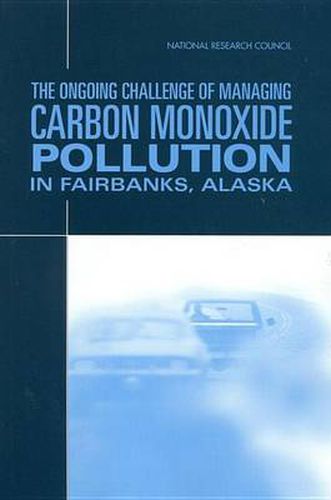Readings Newsletter
Become a Readings Member to make your shopping experience even easier.
Sign in or sign up for free!
You’re not far away from qualifying for FREE standard shipping within Australia
You’ve qualified for FREE standard shipping within Australia
The cart is loading…






Carbon monoxide (CO) is a toxic air pollutant produced largely from vehicle emissions. Breathing CO at high concentrations leads to reduced oxygen transport by hemoglobin, which has health effects that include impaired reaction timing, headaches, lightheadedness, nausea, vomiting, weakness, clouding of consciousness, coma, and, at high enough concentrations and long enough exposure, death. In recognition of those health effects, the U.S. Environmental Protection Agency (EPA), as directed by the Clean Air Act, established the health-based National Ambient Air Quality Standards (NAAQS) for CO in 1971.
Most areas that were previously designated as "nonattainment" areas have come into compliance with the NAAQS for CO, but some locations still have difficulty in attaining the CO standards. Those locations tend to have topographical or meteorological characteristics that exacerbate pollution. In view of the challenges posed for some areas to attain compliance with the NAAQS for CO, congress asked the National Research Council to investigate the problem of CO in areas with meteorological and topographical problems. This interim report deals specifically with Fairbanks, Alaska. Fairbanks was chosen as a case study because its meteorological and topographical characteristics make it susceptible to severe winter inversions that trap CO and other pollutants at ground level.
$9.00 standard shipping within Australia
FREE standard shipping within Australia for orders over $100.00
Express & International shipping calculated at checkout
Carbon monoxide (CO) is a toxic air pollutant produced largely from vehicle emissions. Breathing CO at high concentrations leads to reduced oxygen transport by hemoglobin, which has health effects that include impaired reaction timing, headaches, lightheadedness, nausea, vomiting, weakness, clouding of consciousness, coma, and, at high enough concentrations and long enough exposure, death. In recognition of those health effects, the U.S. Environmental Protection Agency (EPA), as directed by the Clean Air Act, established the health-based National Ambient Air Quality Standards (NAAQS) for CO in 1971.
Most areas that were previously designated as "nonattainment" areas have come into compliance with the NAAQS for CO, but some locations still have difficulty in attaining the CO standards. Those locations tend to have topographical or meteorological characteristics that exacerbate pollution. In view of the challenges posed for some areas to attain compliance with the NAAQS for CO, congress asked the National Research Council to investigate the problem of CO in areas with meteorological and topographical problems. This interim report deals specifically with Fairbanks, Alaska. Fairbanks was chosen as a case study because its meteorological and topographical characteristics make it susceptible to severe winter inversions that trap CO and other pollutants at ground level.